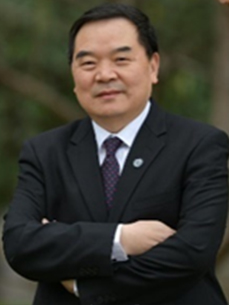
Xinhe Bao
Fudan University, China
Dalian Institute of Chemical Physics, CAS, China
Biography
Academician of the Chinese Academy of Sciences, Fellow of The World Academy of Sciences (TWAS), and Honorary Fellow of the Royal Society of Chemistry; currently Professor of Chemistry at Fudan University and Founding Director of its Advanced Institute for Future Energy; formerly President of the University of Science and Technology of China (USTC), Executive Vice President of Fudan University, and Director of the Dalian Institute of Chemical Physics (DICP), Chinese Academy of Sciences; research centers on catalytic fundamentals and applied catalyst development for efficient energy conversion, having pioneered "Nanoconfinement Catalysis" and developed both the OXZEO® single-step synthesis of lower olefins from coal-derived syngas and catalytic systems for direct methane conversion; current research integrates renewable and fossil energy to engineer near-zero-emission coal chemical processes; honored with the China Catalysis Achievement Award (2023), Tan Kah Kee Prize in Chemical Sciences (2018), Alwin Mittasch Prize from the German Catalysis Society (2017), Outstanding Achievement Award in Natural Gas Conversion (2016), Zhou Guangzhao Foundation Prize (2015), Ho Leung Ho Lee Prize for Scientific Advancement (2012), and the National Natural Science Award (First Class, 2020).
Title
Opportunities and Challenges in Fossil Energy Conversion Under Carbon Neutrality Goals
Abstract
Under China's unwavering commitment to carbon peak and carbon neutrality goals—aligned with building a global community of shared future—a pivotal policy shift will transition "dual controls" from energy consumption to carbon emissions by 2026, establishing a paradigm for global climate governance. Despite rapid expansion of solar and wind power, fossil fuels (coal, oil, natural gas) still dominate China’s energy structure at 80%, necessitating breakthrough technologies for efficient and low-carbon utilization of fossil resources. This presentation will introduce our laboratory’s innovations in green fossil conversion: high-temperature plasma-enabled direct coal-to-acetylene production; single-step conversion of coal-derived syngas to lower olefins, bypassing the traditional Fischer-Tropsch synthesis route with high water consumption and high emissions;; catalytic transformation of natural gas to lower olefins and aromatics; and carbon looping systems via high-temperature electrocatalytic CO₂ reduction for circular coal chemistry—collectively addressing decarbonization challenges during energy transition.
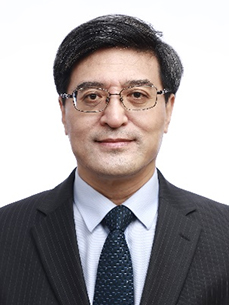
Peixue Jiang
Tsinghua University, China
Biography
Professor, Academician of the Chinese Academy of Sciences. Vice president of Tsinghua University. He is Member of the Ninth Degree Committee of The State Council, Chairman of China Energy Conservation Association, Vice President of Chinese Association of Degree and Graduate Education, Director of Heat and Mass Transfer Branch of Chinese Society of Engineering Thermophysics, Vice Chairman of Beijing Association for Science and Technology. He is Deputy Chief Engineer of a Major National Project, Director of the Ministry of Education Key Laboratory, Chairman of the Beijing International Heat Transfer Conference, Academic leader of Innovation group and Excellence Research Group of National Natural Science Foundation of China. He is Honorary Professor of University of Nottingham in UK and Russian State Research University (National Research University Moscow Power Engineering Institute). Prof. Jiang has been engaged in the research of heat and mass transfer under extreme conditions in the field of energy and power engineering. Based on the characteristics of the micro/nano structure, high temperature and high pressure, strong variation of physical properties, extremely high heat flux and hypersonic speed in the field of low-carbon energy and aerospace power system, the theory of heat and mass transfer under extreme conditions is enriched and developed, the enhanced heat transfer method of micro/nano structure and the prediction method of supercritical fluid heat and mass transfer are proposed, the key technologies of thermal protection for high-temperature surfaces, trans-critical CO2 heat pump and CO2 enhanced, unconventional oil/gas recovery are developed. The research results are applied in the fields of renewable energy, aerospace, CO2 utilization and geological storage. He won the second prize of the National Natural Science Award in 2014 and the second prize of the National Technology Invention Award in 2020, Prize for Scientific and Technological Progress by the Ho Leung Ho Lee Foundation in 2019, and National advanced worker in 2020.
Title
Research Progress on Key Technologies for Large-Scale CO2 Storage in Deep Saline Aquifers
Abstract
In the context of China's unique resource endowment and immense energy demand, CCUS is a key technology for achieving near-zero emissions from fossil fuels, ensuring the energy security while advancing carbon neutrality goals. CO2 geological storage in deep saline aquifer has gained significant attention due to its vast potential. However, it faces challenges such as difficulties in site selection, low injection capacity, and insufficient safety. The geology of China’s deep saline aquifers is complex, and their strong heterogeneity results in large errors in sequestration capacity assessments, limited injection capacity, and high monitoring costs, all of which hinder the commercialization of the technology. This talk will be focused on site selection, injection, and monitoring, achieving the following progress: 1) developing a CO2 geological storage site selection technology system suitable for China’s heterogeneous deep saline aquifers; 2) developing an internationally leading multi-scale experimental platform for CO₂ injection and migration and establishing a preliminary engineering technology system; 3) developing a low-cost, multi-parameter joint monitoring system covering surface, wellbore, and subsurface monitoring; 4) independently developing numerical simulation software for CO2 storage migration and an integrated intelligent decision-making platform for CO2 geological storage. These achievements provide technical support for China’s carbon geological storage projects, promoting the large-scale application of site selection, injection, and monitoring technologies, and ensuring progress towards carbon neutrality goals.
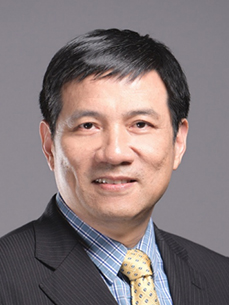
Xing Zhang
Tsinghua University, China
Biography
Professor Xing Zhang is a renowned expert in engineering thermophysics enjoying special government allowances from the State Council of China. He received his Ph.D. in Engineering from Tsinghua University in 1988. Afterwards, he served as a faculty member at Kyushu University, Japan. Since 2005, he serves as a professor and Director of the Institute of Engineering Thermophysics at the School of Aerospace Engineering, Tsinghua University. His research mainly focuses on microscale/nanoscale heat transfer, efficient utilization of renewable energy, thermophysical property measurement in hydrogen energy application, real-time detection and optimization of multi-physical fields in power chips, development of high-performance all-solid-state lithium-ion batteries, and precise early detection and screening of multiple cancers. He has published over 400 SCI-indexed journal papers including Science, Joule, PRL, and Nature Communications, and has given over 60 invited lectures at major International Conferences. He has led one National Key Research and Development Program project in the 13th Five-Year Plan, one Japanese Major International Cooperation Project, one 863 Project, one National Major Scientific Instrument Project, and one National Scientific Instrument Special Project. He has also been in charge of three Key Projects and two General Projects of the National Natural Science Foundation of China. He has received numerous awards, including the Second Prize of Natural Science from the State (2011), the First Prize of Natural Science from the Ministry of Education twice (2018, 2007), the "Hartnett-Irvine Award" from the International Center for Heat and Mass Transfer twice (2023, 2018), the "Thermal Engineering Award” for International Activity from the Japan Society of Mechanical Engineers (2020), the Academic Award from the Japan Heat Transfer Society twice (2021, 2008), and the "Significant Contribution Award” for Asian Thermophysical Properties Research (2013). He has been recognized as a "Highly Cited Chinese Scholar" by Elsevier for 11 consecutive years. He serves as the Vice President of the Chinese Society of Engineering Thermophysics (2014.11 - 2025.04), the Director of the Heat and Mass Transfer Branch (2009.11 - 2025.04), the Director of the Thermal Property Professional Committee of the Chinese Society for Measurement (2017.05 - present), the President (2022.10 - 2024.09), Vice President (2015.11 - 2022.09), the Chairperson of the Award Committee (2015.11 - 2022.09), and a Founding Fellow (2021 - present) of the Asian Union of Thermal Science and Engineering. He is also an Executive Committee Member (2010.08 - 2022.12) and Scientific Council Member (2008.01 - present) of the International Center for Heat and Mass Transfer (ICHMT), and the Chinese representative to the ICHMT. He was the President of the Assembly for International Heat Transfer Conferences (2018.08 - 2023.08). He serves as Associate Editor and Editorial Board member for several domestic and international top journals.
Title
Thermophysical Property Characterization and Process Analysis of Hydrogen Mixtures at High Temperatures and High Pressures for Carbon Neutrality Applications
Abstract
As hydrogen emerges as a pivotal clean energy carrier, understanding the thermophysical properties and behaviors of high-pressure hydrogen mixtures is critical for safe and efficient storage, transport, and utilization. This plenary lecture presents a comprehensive study on the thermophysical characterization and process analysis of high-pressure hydrogen-containing mixtures, which is critical in hydrogen infrastructure development.In the first part, the thermophysical properties of high-pressure hydrogen mixtures are systematically investigated. The homogeneity of the hydrogen-containing mixtures is validated via thermodynamic calculations of compressibility, phase equilibria, and critical points. The PVT (pressure-volume-temperature) property is measured under varying compositions and pressures, and a virial equation of state is developed based on the PVT data. Subsequently, the viscosity and thermal conductivity of these mixtures are evaluated, with emphasis on the impact of impurities (CH₄, CO₂, etc.) and chemical reactions under high-temperature conditions. A thermophysical property database is established for hydrogen and hydrogen-containing mixtures, providing essential data for system design.In the second part, critical thermophysical processes are characterized and analyzed to assess operational risks and efficiency. The jet flow characteristics of high-pressure hydrogen mixtures through orifices are measured and modeled to quantify leakage dynamics and dispersion. Permeation mechanisms in storage tanks are analyzed, considering material compatibility and pressure effects. Additionally, the influence of thermal radiation on mixture stability in storage tanks is evaluated, addressing safety concerns under abnormal fire outbreaks.The lecture will summarize the original innovations on principle, methodology, and apparatuses and recommend for future work in hydrogen mixture standardization and risk mitigation. This lecture bridges fundamental thermophysical insights with practical applications, offering actionable guidelines for hydrogen infrastructure optimization. The findings contribute to the safe scaling of hydrogen technologies, supporting global carbon neutrality goals.
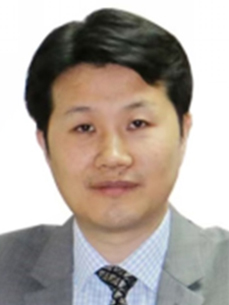
Haisheng Chen
Institute of Engineering Thermophysics, Chinese Academy of Sciences, China
Biography
Professor Haisheng CHEN, BEng, PhD, born in 1977, is currently the Director of Institute of Engineering Thermophysics (IET), Chinese Academy of Sciences (CAS). He received his bachelor from University of Xi’an Jiaotong University in 1997 and Ph.D from IET-CAS in 2002. He joined IET-CAS in 2009 as a “100-Talents” professor after previous employments with University of Leeds, IET-CAS, Vrije University of Brussels and Beihang University. He has been working on fundamental study, technological development and systems of large scale physical energy storages, especially compressed air energy storage for over 20 years. He has been awarded 40+ research projects and his research has led to 600+ peer-reviewed papers, 10+ books and 300+ patents. His publications have received 30000+ citations. He has been awarded 10+ high level prizes including Special Award of China Science and Technology Award for Young Talents, The XPlorer Prize 2021 and Newton Advanced Fellowship of the Royal Society etc. He is now the President of Energy Storage Alliance, China Energy Research Society and vice president of China Society of Engineering Thermophysics. He is currently the deputy editor-in-chief of 5 peer reviewed journals and the chair or co-chair of 8 international and China’s national conferences.
Title
Research progress in China’s energy storage technology
Abstract
This paper provides a comprehensive review of the research progress in China's energy storage technology. By reviewing and analyzing fundamental study, technical research, and integrated demonstration, the major technological advancements in China's recent energy storage field are summarized. A comprehensive analysis indicates that China's energy storage sector has experienced a rapid development, with significant achievements made in fundamental research, key technologies, and integrated demonstrations. China is now the most active country globally in all the three fields of fundamental research, technology development, and integrated demonstrations in energy storage. Moreover, the installed power of new energy storage technologies has surpassed that of pumped hydro storage for the first time, marking a historic milestone.

Margaret Graham
The University of Edinburgh, UK
Biography
Professor Margaret Graham is the Director of the Edinburgh Earth Initiative, which supports the delivery of the University of Edinburgh’s strategies on Climate and Environment. Its remit is to develop the transdisciplinary partnerships that will tackle current and future challenges within six thematic areas: Clean Energy Systems, Sustainable Future Cities, Circular Economies, Future Food Systems, One Health, Data/AI and Sustainability (www.earth.ed.ac.uk). She is the University of Edinburgh lead for our Low Carbon College partnership with Shanghai Jiao Tong University that won the 2022 British Chamber of Commerce/British Business Council Award for an Education Partnership. Professor Graham is also Co-Director of the International Institute for Environmental Studies (IIES), a virtual network of ~30 universities (including the University of Edinburgh and Shanghai Jiao Tong University) that supports academic and research enterprises in the areas of environmental science, environmental management and sustainability studies. The Institute fosters international exchanges of research scientists, field experts, faculty members, post-doctoral fellows and students as well as facilitating exchange of ideas research needs, and results among IIES members (www.ii-es.com). Professor Graham holds a Personal Chair in Environmental Geochemistry at the University of Edinburgh. Her research interests include soil and groundwater geochemistry, climate change and biogeochemical cycles, environmental analytical chemistry, isotopic composition and ICP-MS techniques, nanofiltration and membrane fouling in water treatment. She is an International Board Member of the International Water Association, a member of the UK Drinking Water Reservoir Management Group and has been an invited expert for the US Environmental Protection Agency, the Drinking Water Quality Regulator (Scotland) and Scottish Water.
Title
Carbon neutrality and sustainable water systems: addressing climate-induced impacts on drinking water quality
Abstract
Global goals of providing ‘clean drinking water for all’ increasingly brings challenges for curtailing carbon emissions. In the context of climate change, there are growing issues around source water contamination including elevated concentrations of manganese, taste-and-odour, harmful algal blooms as well as a range of emerging contaminants such as PFAS, plastics, pharmaceutical and viruses. This paper will focus on the growing global issue of elevated dissolved manganese levels in shallow surface drinking water sources. Manganese at low concentrations is an essential element for all living organisms but excessive concentrations in drinking water pose a risk to human health. It affects cognitive function and the central nervous system, and is linked to manganism in adults and a reduction in IQ levels in children. There is growing recognition that manganese in drinking water is becoming a pressing global problem, affecting countries such as Bangladesh, Cambodia, Canada, China, Germany, Korea, UK, US among others. High concentrations are not only found in groundwater but in surface waters, where rapid seasonally related increases can overwhelm water treatment systems and result in impaired tap water for the consumer. Moreover, where lead pipes remain in distribution systems, high dissolved manganese concentrations has also been linked with enhanced lead release, providing an additional neurological risk to health. Particle releases from manganese deposits within distribution systems have also been implicated in virus release. There is a clear need for effective water treatment methods to protect human health but these must be balanced against there likely efficacy under ambient conditions within natural systems and the potentially considerable carbon (energy, chemicals, infrastructure) costs. Current water treatment approaches include filtration (e.g. reverse osmosis) and oxidation (e.g. ozonation, permanganate) or in-situ methods such as hypolimnetic oxygenation (HOx; e.g bubble curtains) and reservoir mixing (e.g. ResMix). This paper will review the processes underpinning the solubilisation of manganese in shallow surface drinking water sources and their impacts upon the costs and effectiveness of manganese removal approaches.
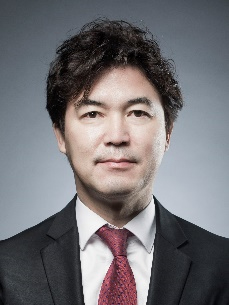
Yong Tae Kang
Korea University, Korea
Biography
He received his BS and MS at Department of Mechanical Eng., Seoul National University in 1987 and 1989, respectively, and PhD at Department of Mechanical Eng, The Ohio State University in 1994. After spending two years at the OSU as a postdoctoral researcher, he joined JST as a special researcher and TUAT, Tokyo, Japan as a visiting professor in 1997. After spending three years at JST and TUAT, he joined the faculty at Kyung Hee University, Korea in 2000, and moved to Korea University as a full professor in 2014. His research focuses on thermal energy systems including absorption heat pumps, heat exchanger design, refrigeration systems, thermal energy storage, CO2 capture using nanoabsorbents and sorption thermal battery. He published more than 450 international papers and more than 250 conference papers. He is now a member of ASHRAE (American Society of Heating, Refrigeration, and Air-Conditioning Engineers), KSME (Korean Society of Mechanical Engineers), IIR (International Institute of Refrigeration), JSHRAE (Japanese Society of Heating, Refrigeration, and Air-Conditioning Engineers) and SAREK (Society of Air-Conditioning and Refrigeration Engineers of Korea). In 2010, his lab. was designated as a National Research Lab. by the Ministry of Science and Technology. In 2015, he received the Asian Academic Award jointly from SAREK/CAR/JSRAE. In 2017, he received the best research award from Korea University. In 2019, he was elected as a fellow of The Korean Academy of Science and Technology. He was also elected as a fellow of National Academy of Engineering of Korea in 2020. He served as a director of BK21 plus center for creative research engineers of convergence mechanical systems, School of Mechanical Engineering, Korea University. He is a former president of SAREK in 2022 and now fellow of SAREK and AUTSE. Now he is a director of Research Center for Plus Energy Building Innovative Technology (ERC) sponsored by Korea Government.
Title
Sorption thermal battery and CO2 capture-integrated ERV system for plus energy building applications
Abstract
A key strategy for realizing a plus-energy building, beyond the net-zero energy building, is to utilize renewable energy sources such that the amount of generated energy exceeds the energy consumed. Due to the mismatch between energy supply and demand, the application of a high-performance energy storage system is essential for the effective utilization of renewable energy. Additionally, minimizing unavoidable energy consumption within buildings is also important. Among such energy loads, ventilation plays a vital role in maintaining comfortable indoor air quality, particularly by regulating indoor CO2 concentrations. Accordingly, this study introduces two key technologies of plus energy building: adsorption-driven sorption thermal battery (STB), and a CO2 capture-integrated energy recovery ventilation (CERV) system. First, the STB stores thermal energy by utilizing renewable sources (e.g., solar energy) during off-peak periods and discharges it whenever thermal loads exist. It operates via a reversible solid–gas reaction, storing energy as chemical potential without losses. During the charging process, the sorbate acquires sufficient momentum to overcome the binding forces with the sorbent, resulting in phase separation and energy storage. Conversely, discharging occurs when the sorbate undergoes a phase change upon re-contact with the sorbent, releasing heat for practical use. This form of thermal storage eliminates the need for thermal insulation and allows for compact systems with high energy storage density. To enhance system-level performance, this study proposes and validates a generalized optimization methodology for STB reactor employing a LiOH-impregnated zeolite 13X (LiOH@Z-13X) composite adsorbent. A lab-scale STB system is constructed, and dynamic simulations are performed using a simplified breakthrough curve model to identify key operating parameters. Combined with material characterization, the effects of operating conditions are experimentally investigated to optimize performance at both the particle and reactor levels. To the best of our knowledge, this is the first study to evaluate the reactor-scale performance of an STB using a LiOH@Z-13X composite, bridging the gap between material-scale properties and system-scale applications. The breakthrough curve approach enables a comprehensive assessment of key factors such as packing density, reactor length, vapor concentration, and flow rate. These variables are unified into a dimensionless moisture-adsorption distance (ξ), allowing for generalized prediction of system performance. Model predictions are experimentally validated, and optimal operating conditions are identified to achieve desired thermal output. The optimal operating range is determined to be ξ = 0.105-0.118, achieving a maximum system-level ESD of 188.4 kWh m-3, which represents a 38 % improvement compared to 136.3 kWh m-3 at ξ= 0.038. Furthermore, a high-performance STB system must not only exhibit high energy density but also ensure stable thermal output. To this end, a novel adaptive vapor flux regulation strategy is developed and experimentally validated to mitigate thermal attenuation. Under identical operating conditions, the application of adaptive flux control extended the stable heat output duration from 80 minutes (in constant flux mode) to 226 minutes. These results provide practical insights for the real-world deployment of high-performance STB systems. Next, to address the lack of conventional indoor CO2 control technologies, this study further proposes a novel CO2 capture-integrated energy recovery ventilation (CERV) system that incorporates a high-performance CO2 filter, enabling continuous indoor CO2 removal while reducing ventilation-related energy consumption. An amine-functionalized sorbent is developed and characterized, and its durability is evaluated under repeated adsorption–desorption cycles to confirm its applicability in indoor environments. Sorbent performance is quantified and integrated into a CO2 concentration-based feedback control algorithm to assess its impact on CO2 reduction and ventilation energy savings. Simulation-based evaluations under varying indoor conditions revealed that, under optimal control strategies, the proposed system reduced annual heating and cooling loads by 52.6% and 27.9%, respectively, compared to a conventional ERV system. In parallel with this ventilation load reduction strategy, the study further explores a novel direction by developing a lab-scale prototype CO2 capture filter and evaluating its performance under realistic indoor conditions, thereby assessing the practical feasibility of its indoor implementation.




 loading......
loading......